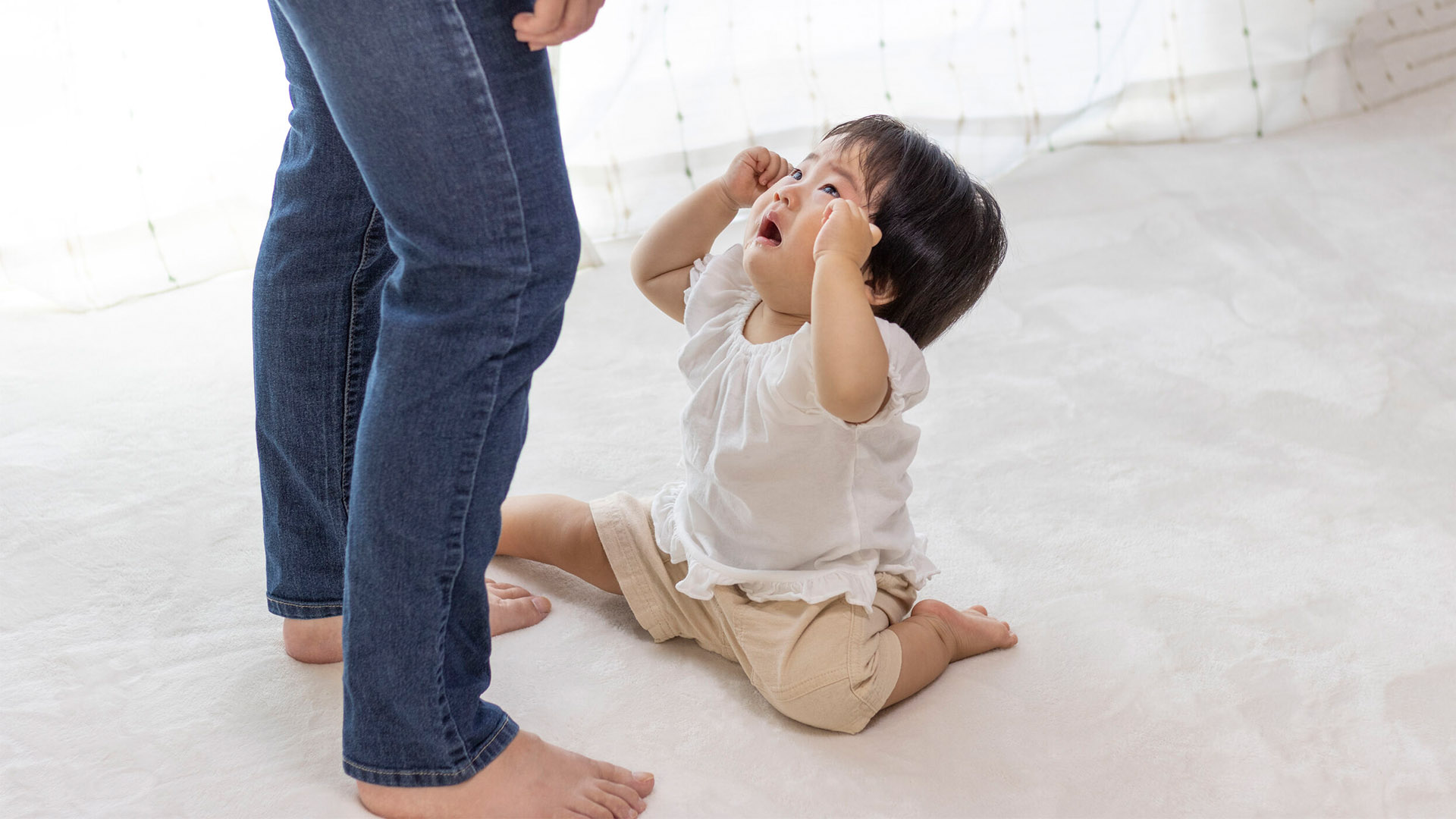I. Introduction

Acknowledging common toddler behavior and the concept of clinginess
Toddlers are going through a crucial stage of development where they are discovering their sense of self and their place in the world. It is natural for them to experience periods of clinginess, where they seek comfort and reassurance from their primary caregivers. Understanding why toddlers become clingy and the signs and symptoms of this behavior can help parents and caregivers support their child’s emotional development effectively.
II. Why Toddlers Become Clingy
A. Developmental Milestones and Separation Anxiety
Exploring Developmental Milestones in Toddlers
Toddlers are experiencing significant developmental milestones during this stage. They are learning to walk, talk, and assert their independence. However, along with these new achievements, they may also experience moments of insecurity and dependency.
Understanding Separation Anxiety and its Impact on Clinginess
Separation anxiety is a normal part of a child’s development, usually occurring between 8 months and 2 years of age. It is characterized by a fear or distress when separated from their primary caregiver. This anxiety can contribute to increased clinginess as toddlers strive for constant reassurance and connection.
B. Environmental Factors
Change of Routine or Environment
Toddlers thrive on routine and familiarity. Any changes in their routine or environment, such as starting daycare or moving to a new house, can trigger feelings of insecurity and lead to clingy behavior.
New Siblings or Family Dynamics
The arrival of a new sibling or changes in the family dynamics can also disrupt a toddler’s sense of security. They may feel threatened by the attention given to the new family member and respond by seeking more attention from their primary caregiver.
III. Signs and Symptoms of Clinginess
A. Behavioral Indicators
Increased Need for Physical Contact
Clingy toddlers often display a heightened need for physical contact with their primary caregiver. They may constantly want to be carried, held, or cuddled.
Difficulty with Separation
When faced with separation from their caregiver, clingy toddlers may become anxious, cry, or protest. They may resist going to daycare or leaving their parent’s side, making drop-offs challenging.
Fear or Reluctance to Engage in Independent Activities
Clingy toddlers may show fear or reluctance to engage in independent activities. They may prefer to stay close to their primary caregiver, avoiding exploring new environments or playing independently.
B. Emotional Indicators

Increased Anxiety or Insecurity
Clinginess often arises from a place of heightened anxiety and insecurity in toddlers. They seek constant reassurance and attention from their primary caregiver, fearing abandonment or separation.
Seeking Comfort or Reassurance
Clingy toddlers may frequently seek comfort or reassurance from their caregiver through constant demands for attention, physical contact, or verbal reassurance.
IV. How to Cope with Clinginess
A. Validate Emotions and Offer Reassurance
- Acknowledging and Validating Their Feelings
When your child is displaying clingy behavior, it is essential to acknowledge and validate their emotions. Let them know that it is okay to feel scared or anxious in certain situations. Avoid dismissing their feelings or labeling them as “silly” or “unfounded.” By valuing their emotions, you help build trust and create a safe space for them to express themselves.
- Providing Emotional Support and Reassurance
Offering reassurance can help alleviate your child’s clinginess. Reassure them that you are there for them and that they are safe. Explain that sometimes it is okay to feel scared, but with your support, they can navigate through these emotions. Provide comfort and a sense of security through physical touch, such as hugs or holding their hand.
B. Establish Consistent Routines and Boundaries

- Creating Predictable Routines
Consistency can be reassuring for children. Establishing predictable routines can help them feel more secure and less anxious. Set regular times for meals, bedtime, and activities. This structure provides a sense of stability and helps them anticipate what comes next, reducing clingy behavior.
- Setting Clear Boundaries and Expectations
Clearly define boundaries and communicate with your child about what is expected of them. For example, explain that they need to play independently for a certain period before needing your attention. Be consistent in enforcing these boundaries and avoid giving in to their clingy behavior. By doing so, you help them develop a sense of independence and understand that they cannot rely on you for constant attention.
C. Gradual Exposure to Independence
- Encouraging Independent Play and Exploration
Encourage your child to engage in independent play and exploration. Provide age-appropriate toys, games, and activities that encourage their curiosity and imagination. Start with short periods of independent play, gradually increasing the time as they become more comfortable and confident in their own abilities.
- Gradually Increasing the Time Apart
In addition to independent play, gradually increase the time spent apart from your child. Start with small increments, such as leaving them with a trusted caregiver or family member for short periods. Gradually lengthen the time apart as they become more comfortable. This gradual exposure helps build their confidence and independence.
D. Encourage Social Interaction and Confidence-building Activities
- Facilitating Playdates and Social Interactions
Encourage your child to interact with other children through playdates or group activities. Socializing with peers can help them develop important social skills, build confidence, and reduce clingy behavior. Supervise and facilitate these interactions, providing gentle guidance when needed.
- Encouraging Age-Appropriate Independent Tasks
Encourage your child to engage in age-appropriate tasks independently. This could include simple chores, self-care activities, or completing small tasks on their own, such as picking out their clothes or making their bed. By fostering their independence, you help them develop skills and confidence in their abilities.
V. Seeking Additional Support

A. Consulting with Professionals
- Speaking with Pediatricians or Child Development Specialists
If your child’s clinginess persists or intensifies despite your efforts, consider seeking advice from professionals. Pediatricians or child development specialists can provide valuable insights and strategies specific to your child’s needs. They can assess any underlying factors contributing to the clinginess and offer guidance on how to address them effectively.
- Utilizing Parenting Resources and Support Groups
There are numerous parenting resources and support groups available both online and in person. These resources can offer guidance, tips, and emotional support from parents who have experienced similar challenges. Joining a support group or accessing online resources can provide you with a network of support and help you navigate the difficulties of dealing with clinginess.
B. Taking Care of Parental Well-being
- Practicing Self-care and Seeking Support from Loved Ones
Parenting can be exhausting, especially when dealing with clinginess. It is important to prioritize self-care and seek support from loved ones. Take breaks when you need them, engage in activities that recharge you, and lean on your support system for emotional support and assistance with parenting responsibilities. By taking care of yourself, you can better support your child.
- Managing Stress and Balancing Parenting Responsibilities
Managing stress is crucial when coping with clinginess. Practice stress management techniques such as deep breathing, mindfulness, or exercise. Additionally, strive for balance in your parenting responsibilities by finding ways to share the workload with your partner or other caregivers. Balancing your responsibilities can help reduce stress and support your overall well-being.
In conclusion, coping with clinginess requires patience, understanding, and a combination of strategies. By validating emotions, establishing consistent routines and boundaries, gradually exposing children to independence, encouraging social interaction and confidence-building activities, and seeking additional support, parents can navigate through this phase while promoting their child’s emotional development and independence. Remember, every child is unique, so be flexible and adapt these strategies to meet their individual needs.



